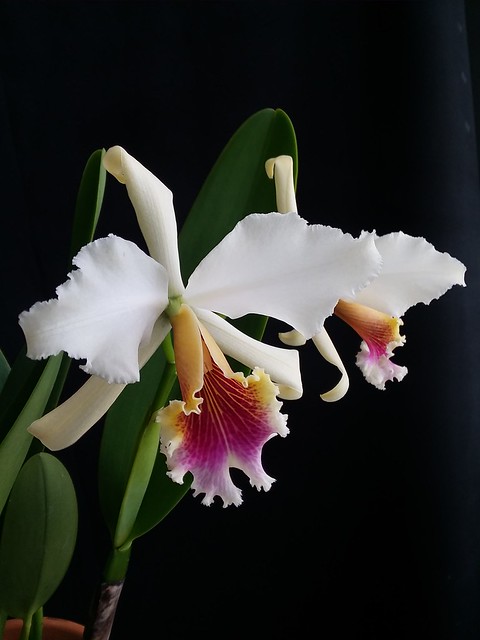Although I post a lot of paph pics here, I am really a Cattleya connoisseur lol. I collect the rare varieties or forms of the unifoliates, particularly flameas and pelorics, or simply just with special traits. Some of you have seen the ones I bloomed recently. I will post some pics here that I have not shown on ST when I gather them together.
There are some confusion that surround certain species that tend to perpetuate through lack of proper updated information. What happens in North America is not what happens with the rest of the world sometimes. Through my travels of judging in US, Asia and South America, many myths surrounding these magnificent plants were completely busted for me.
For example:
1. the new quadricolors have many flat cultivars. We awarded a few in Bogota that could rival trianaes.
2. lawrenceana is readily available from South American vendors who regularly come to Redlands and Tamiami.
3. eldorados/wallisi is not a difficult species to grow under lights as long as they are watered properly and kept in the warmest part of the growing area (where phals grow, they thrive closer to the light).
The key to growing the right species is to determine if you have the right spot for it in your growing environment. There's the warm spot all year or that cool spot in winter. Place the plants accordingly. For me it could simply be a difference of one foot from the window separating the percivaliana from the eldorado (who is further in).
There are many fantastic cattleya growers on here, and I hope we can keep sharing and exchanging info within our ‘secret’ cattleya group hiding in a slipper forum lol.
There are some confusion that surround certain species that tend to perpetuate through lack of proper updated information. What happens in North America is not what happens with the rest of the world sometimes. Through my travels of judging in US, Asia and South America, many myths surrounding these magnificent plants were completely busted for me.
For example:
1. the new quadricolors have many flat cultivars. We awarded a few in Bogota that could rival trianaes.
2. lawrenceana is readily available from South American vendors who regularly come to Redlands and Tamiami.
3. eldorados/wallisi is not a difficult species to grow under lights as long as they are watered properly and kept in the warmest part of the growing area (where phals grow, they thrive closer to the light).
The key to growing the right species is to determine if you have the right spot for it in your growing environment. There's the warm spot all year or that cool spot in winter. Place the plants accordingly. For me it could simply be a difference of one foot from the window separating the percivaliana from the eldorado (who is further in).
There are many fantastic cattleya growers on here, and I hope we can keep sharing and exchanging info within our ‘secret’ cattleya group hiding in a slipper forum lol.
Last edited:































































